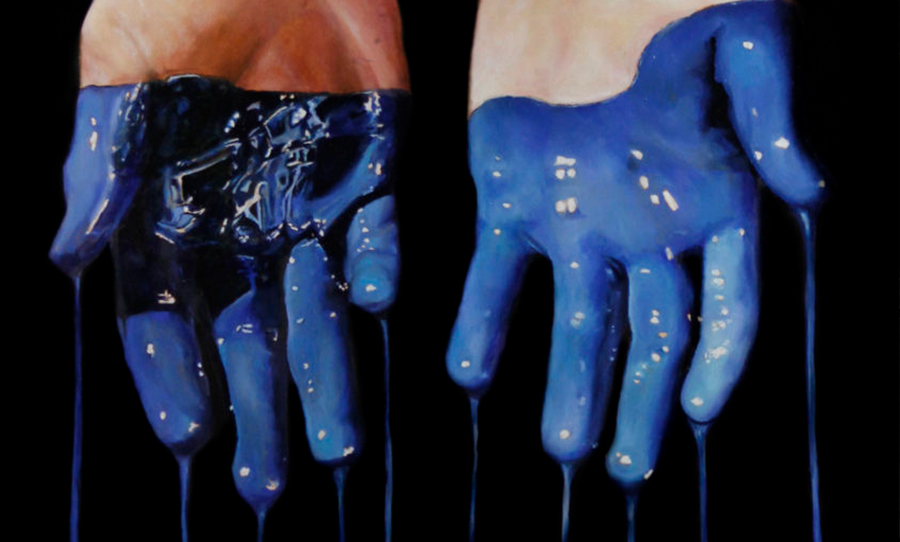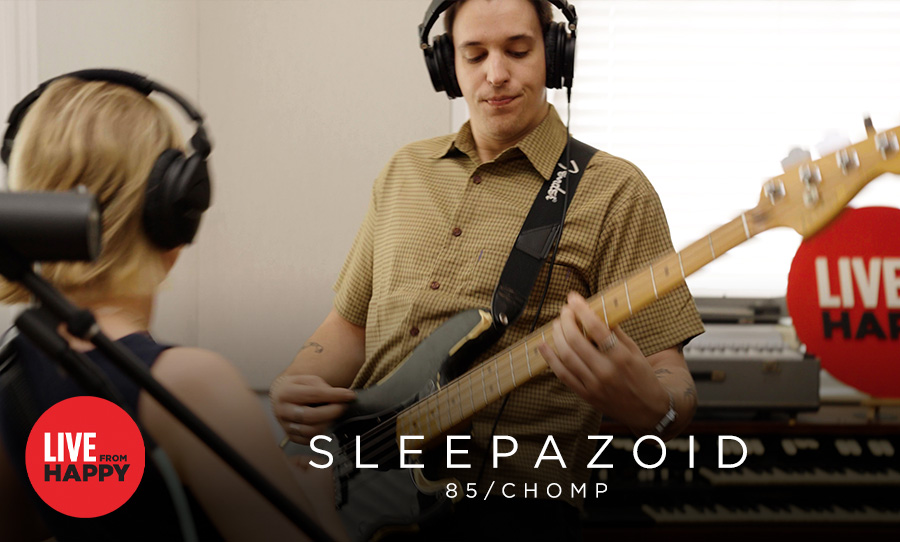Jamie Preisz is a young but super talented Sydney-based artist who is kicking some serious goals at the moment. His works extend into realms of filmmaking and drawing, but it’s his painting that has earned him a glaring spotlight over the last 12 months.
Recently he took out the Packing Room Prize at the 2018 Archibald for his harrowingly emotional portrait of Jimmy Barnes. The painting deals with themes of mental health, masculinity, and hope, heavily inspired by his own personal circumstances.
“After losing my sister to suicide, Preisz told the Archibald. “I was touched deeply when I saw an interview with Jimmy speaking about his own suicide attempt. To me, he was fighting against the stigma of mental health issues by speaking so publicly about his own struggles, especially to generations of men who don’t feel that having emotional intelligence is a masculine quality.”
Just last year, he exhibited a stunning collection of works at Commune in Waterloo, Sydney titled ‘Unrealistic’, which featured the likes of The Jezabels’ Haley Mary, Abdul Abdullah and Kirin J. Callinan.
We took five with Jamie to find out more about his creative process and how he keeps focused when painting for large blocks of time.
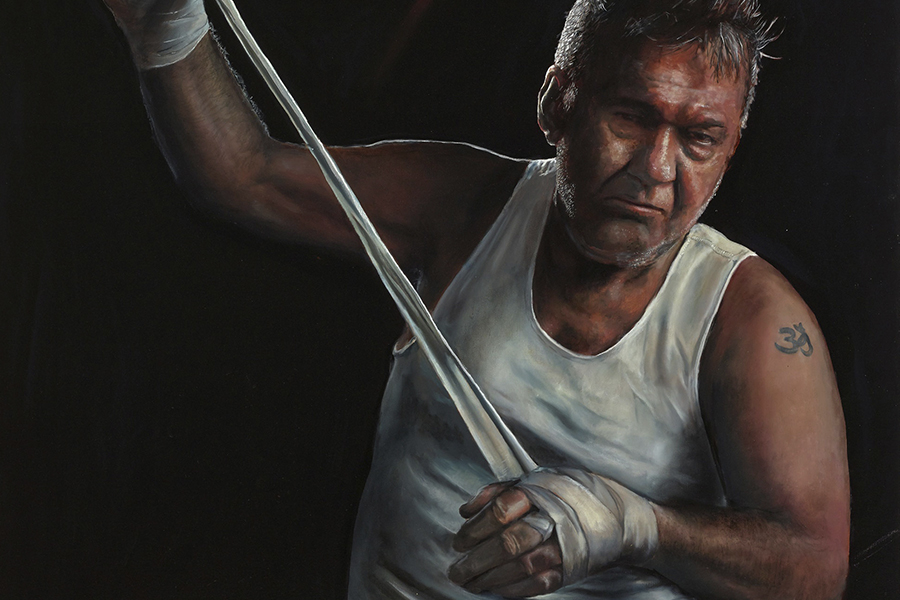
We take five with Jamie Preisz, the young but super talented artist who recently took home the Packing Room Prize at the 2018 Archibald for his unreal portrait of Jimmy Barnes.
HAPPY: What tools are indispensable to your craft? How do they fit into your workflow?
JAMIE: Podcasts are absolutely vital. I’m a fiend for them. Lots of true crime, science, philosophy and in general more non-fiction storytelling. It really helps distract me from the anxiety of the task at hand. Sometimes you can have a constant voice in your head, questioning if something is worthwhile but for long-form work (things that take a long time) there is a time to silence that voice so that the work can get done.
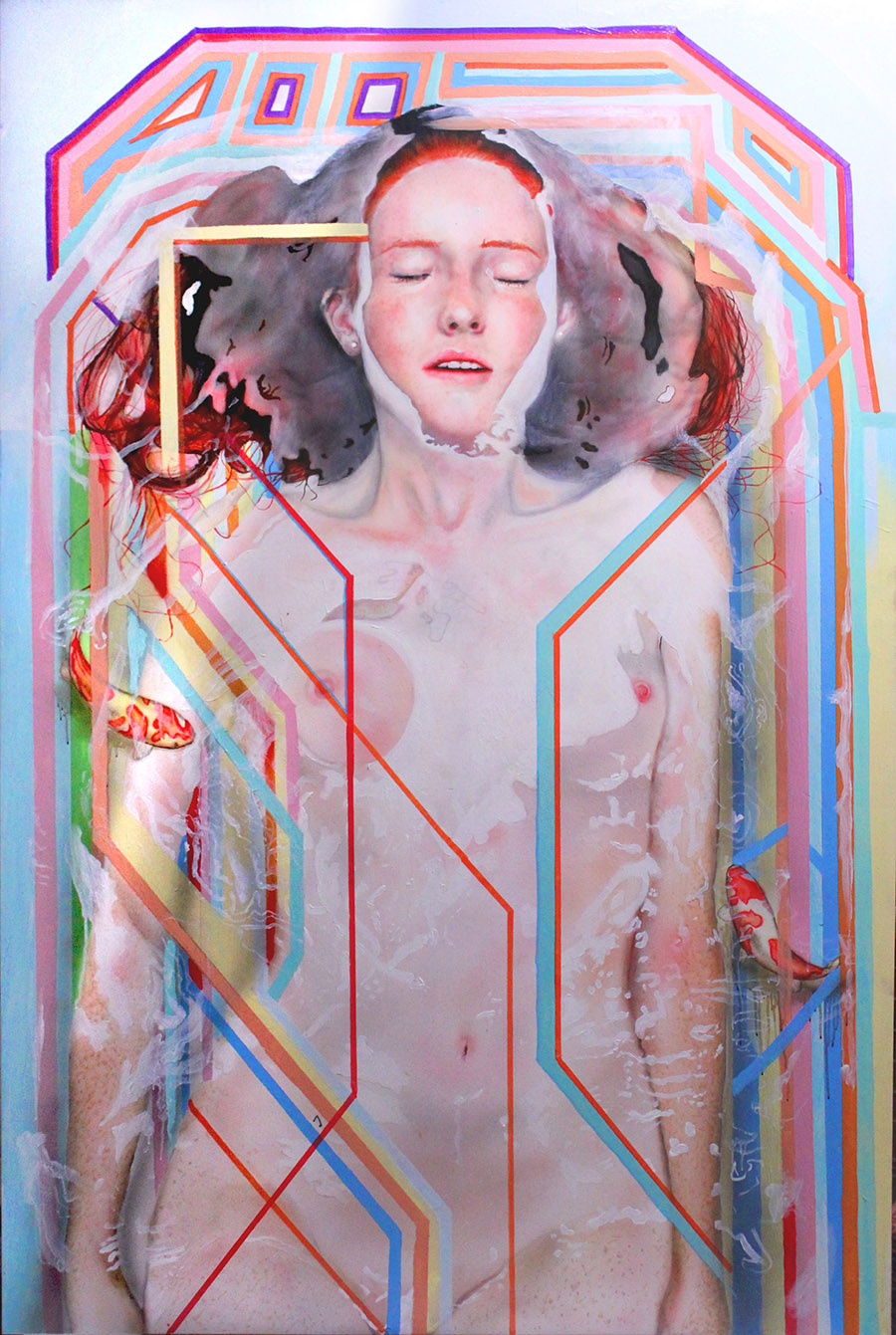
HAPPY: How do you personally define success as an artist?
JAMIE: Success to me is that feeling of achievement after a long day of painting. A feeling of being happy with my output that day and being satisfied knowing all those little thoughts in my head saying you should try this, or explore this, have been satiated. The other one is seeing my work hanging in someone’s house knowing that now it has its own life to live beyond me.

HAPPY: What’s your creative space like? How does it influence your work?
JAMIE: My space is chaotically organised. I have bits of canvas on the floor with test colours painted on them, a stool, a table with my palette and a large easel with whatever I’m working on perched on top of it. On the walls of my studio, I usually have a couple other paintings on the go in various stages with reference pictures and sketches from friends pinned all around me. I have a whiteboard with what I want to get done in the week and a bunch of crudely written semi-inspirational quotes scrawled across the walls like “talent is cheap” to remind me to keep going.
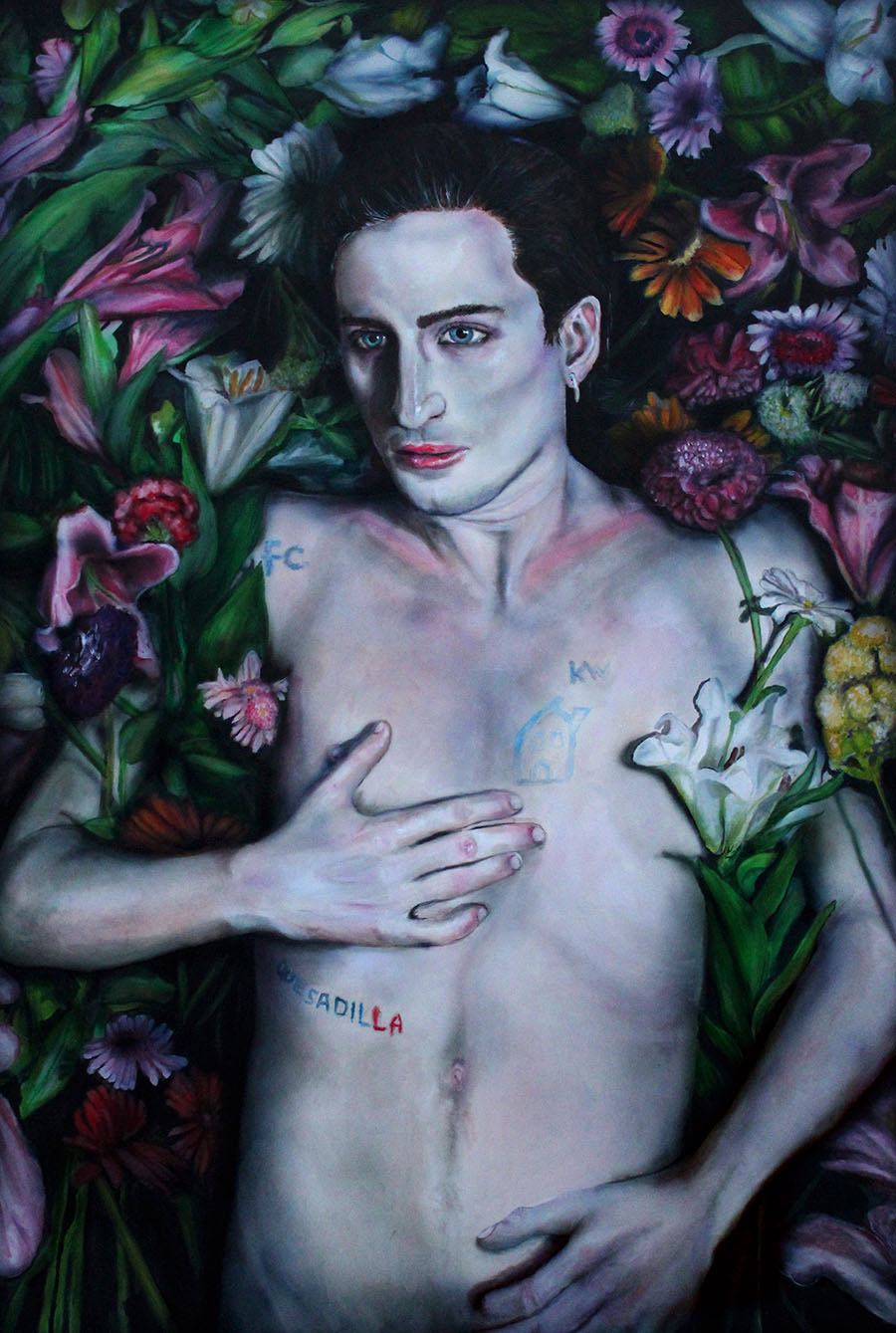
HAPPY: What’s your favourite part about working with oils?
JAMIE: My favourite part of working with oils is the long process it takes to finish a work. I think I have a tendency to have a short attention span and be impulsive but oils force me to slow down and really consider everything I do in a mindful way because a mistake early on can ruin a whole work and that’s 100 or so hours down the drain.
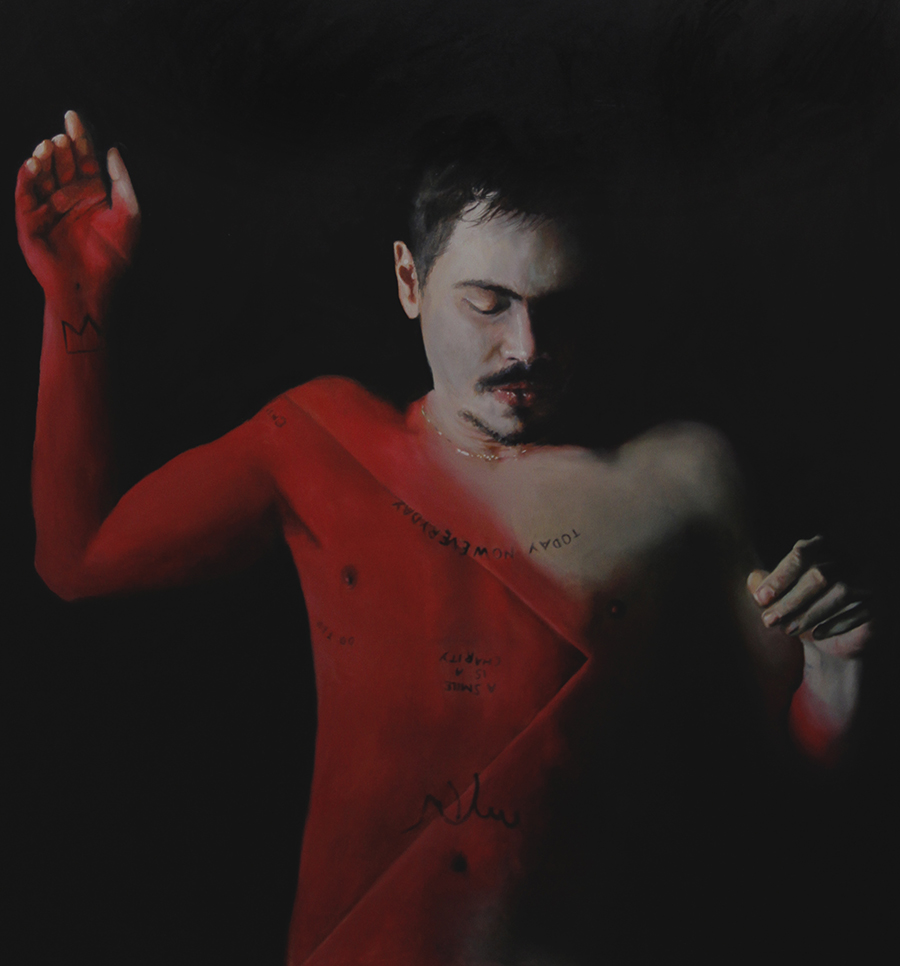
HAPPY: Describe your creative process.
JAMIE: I work from photos more often than not now. I will think of an idea or someone I would like to paint, then I meticulously plan out the shoot. Usually a subject comes in and I’ll take 200-300 images, go through them all and pick a few favourites. Once I’m there I usually take bits from each image to make something I like then begin painting. Stretch my canvas, prime it, sketch, under paint, over paint, glaze, then varnish. I often work on two or three paintings at a time to ensure I get ‘competitive’ between them. If one is starting to look really good I swap to the one that needs more attention.

HAPPY: How do you know when a work is finished?
JAMIE: Not to be glum but Davinci said “Paintings are never finished, only abandoned,” I think that’s partly true. I usually follow my own process to get a work 95% but the last 5% I sit in front of the work staring at it and changing things until I don’t want to change anything else. This could take days but often takes weeks.
